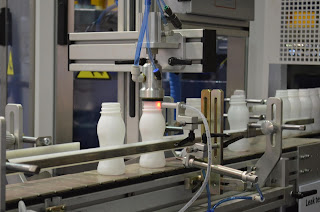PET or polyethylene terephthalate is commonly used as resin for stretch blow molding of bottles. Due to the nature of PET and various factors of the stretch blow molding machine, the occurrence of a few problems is inherent to the process. This blog discusses 3 of the most common problems which occur during PET stretch blow molding and their solutions.
View original source at: http://www.petallmfg.com/blog/stretch-blow-molding-machinery-for-plastic-bottles/
Contact Details:
Development of a Pearly Sheen and Haze (Whitening)
If the PET is overstretched during the molding or is heated beyond 115 degrees Celsius during the injection or the blow stages, the formed bottle develops a distinct whitish tone. Since there are 2 different ways for the whitening to form, the whitening due to overstretching is called a pearly sheen and the one due to high temperature is called haze. In order to be able to prevent the development of the pearly sheen and haze, let’s understand the reasons for their formation.
If the PET is overstretched while molding, its microstructure breaks up leading to the formation of a number of white circles which forms the pearly sheen. In order to solve this, the thin area which is affected should be cooled down and the part under the thin area should be heated so that the thin area receives a reinforcement of the material.On the other hand, haze forms when the temperatures reach beyond 115 degrees Celsius. At such temperatures, the molecules of PETA form crystals so as to achieve a lower energy state. Solutions range from lowering down the temperature source to increasing the ventilation.Insufficient Top-load Strength
Attempts to reduce the weight of the bottles are a common practice as it saves PET resin. However, such attempts often result in the falling of the top load strength below the required levels. The quality of the bottles then gets affected as they may break rather easily. To solve this, we have to realize that the bottles break at their weakest parts. These weak parts need to be replenished with more material in order to avoid insufficient top load strength.
View original source at: http://www.petallmfg.com/blog/stretch-blow-molding-machinery-for-plastic-bottles/
Contact Details:
PET ALL MANUFACTURING INC.
85 Royal Crest Court, Units 1 & 2 Markham,
Ontario, L3R 9X5
Phone: (905) 305-1797
Email: cmerrick@petallmfg.com
85 Royal Crest Court, Units 1 & 2 Markham,
Ontario, L3R 9X5
Phone: (905) 305-1797
Email: cmerrick@petallmfg.com

